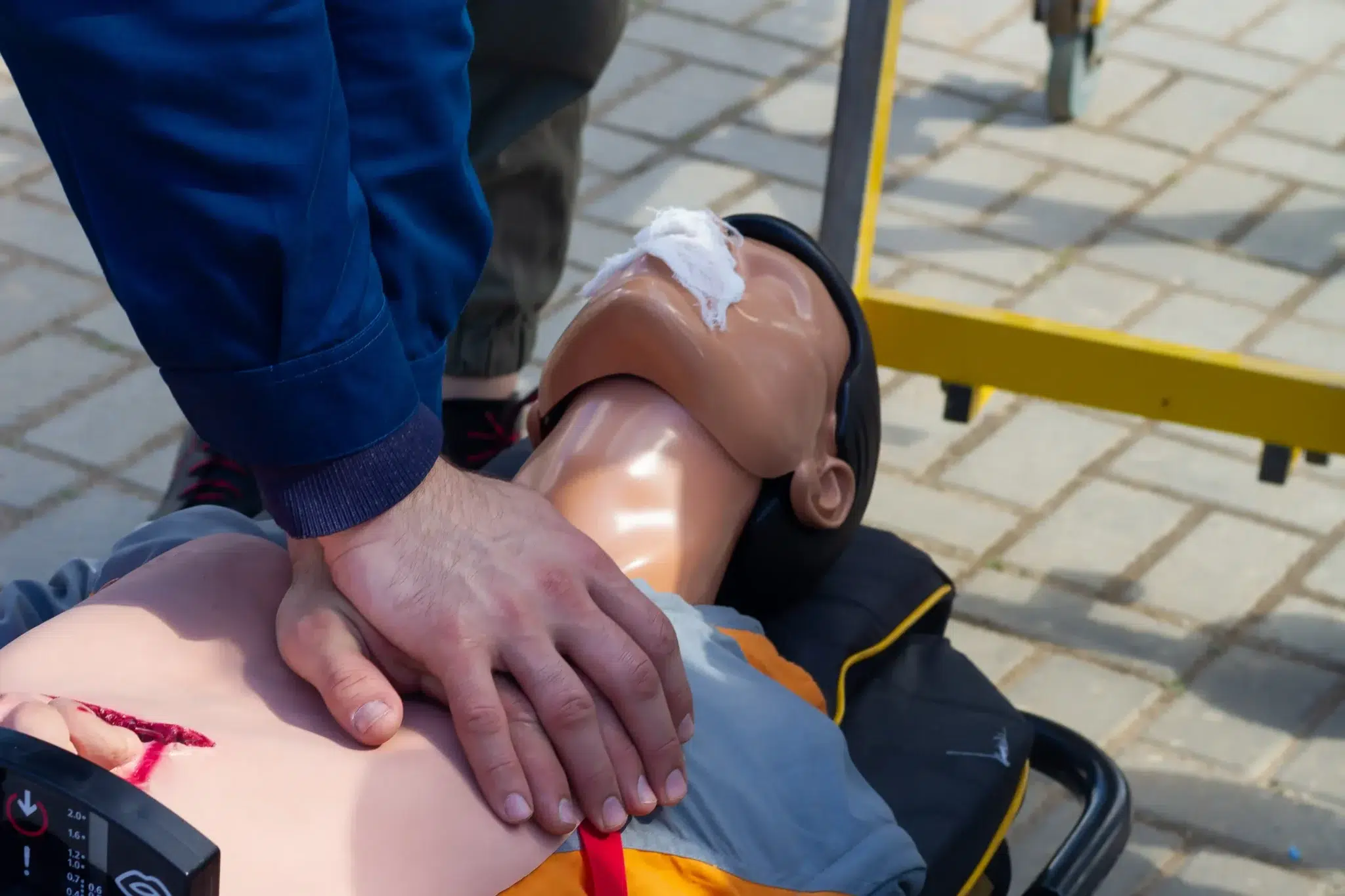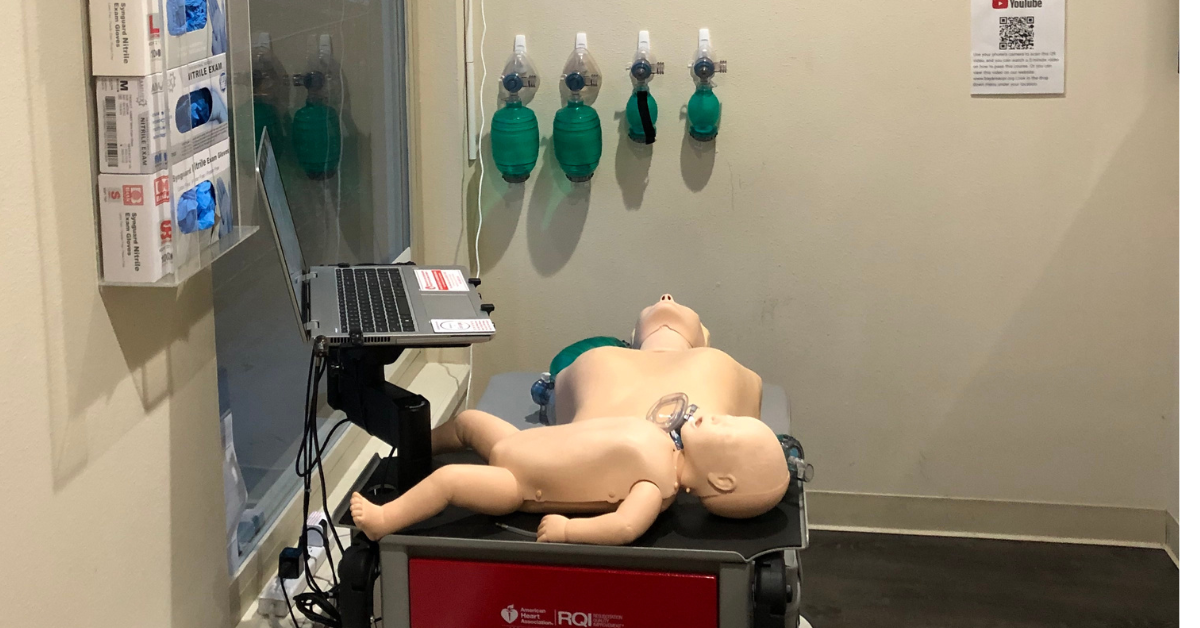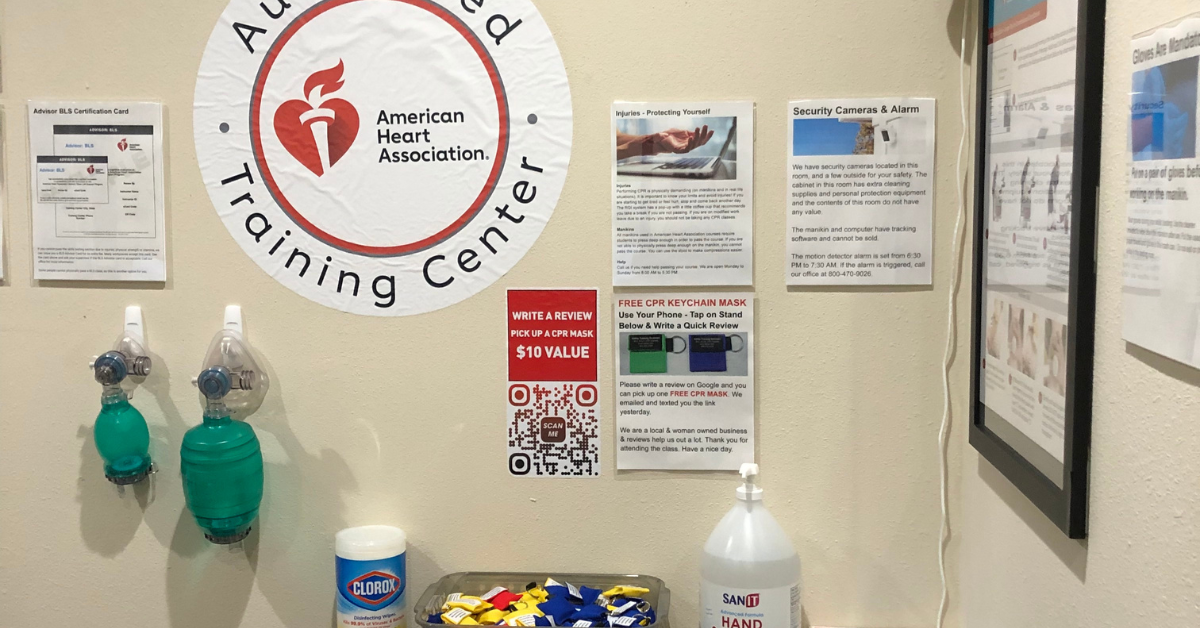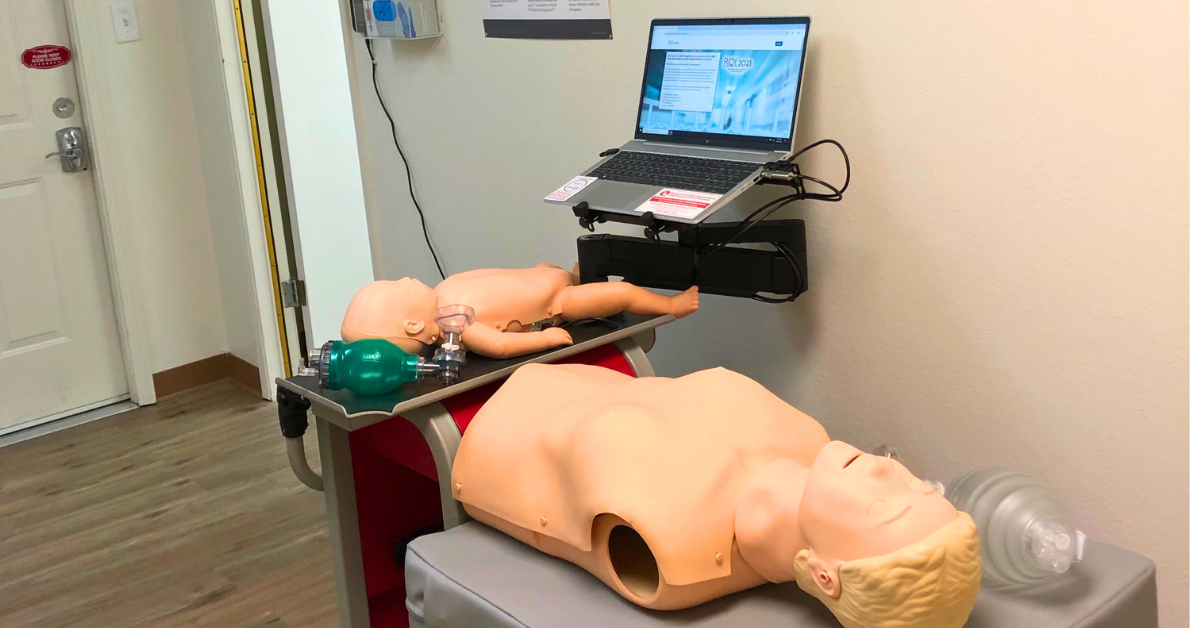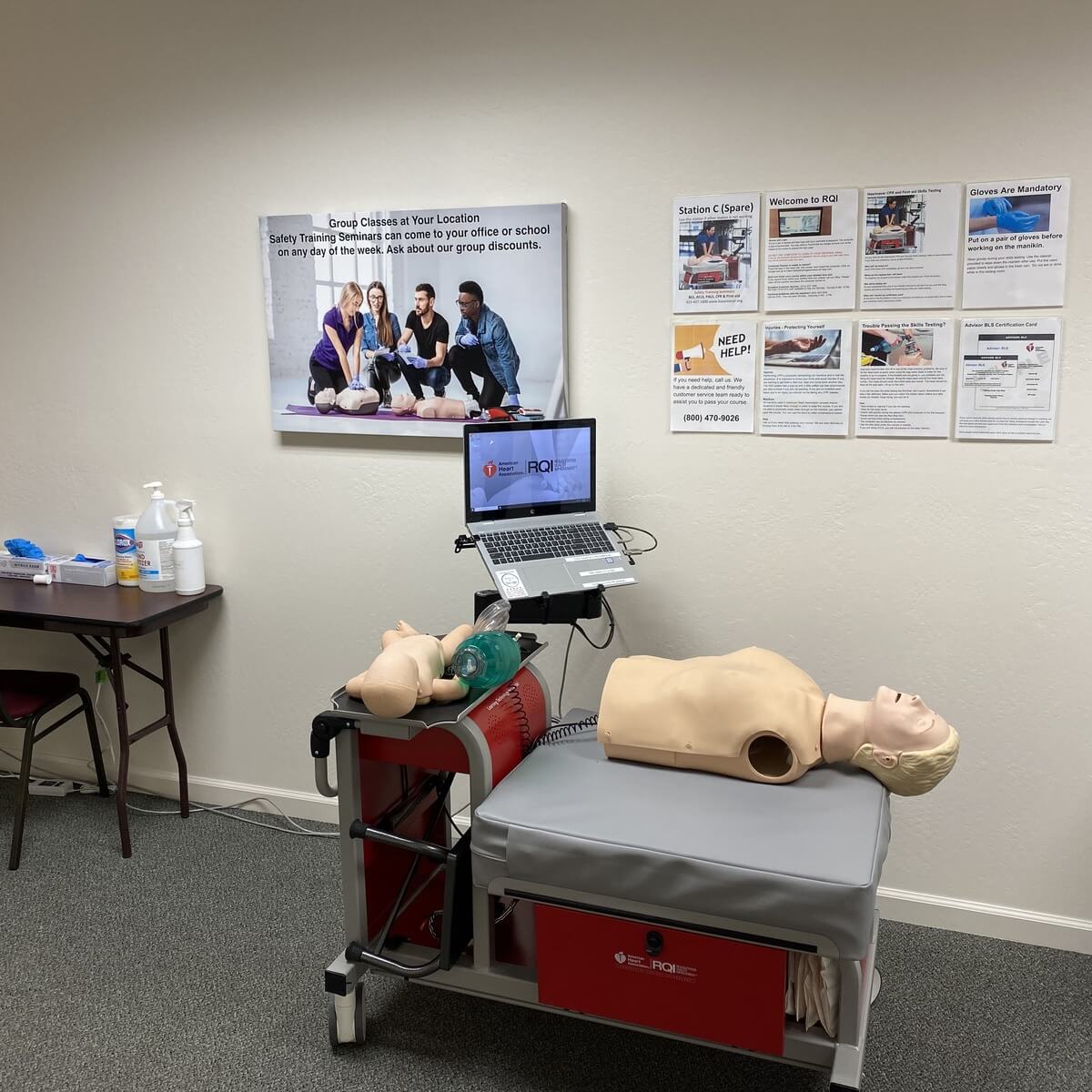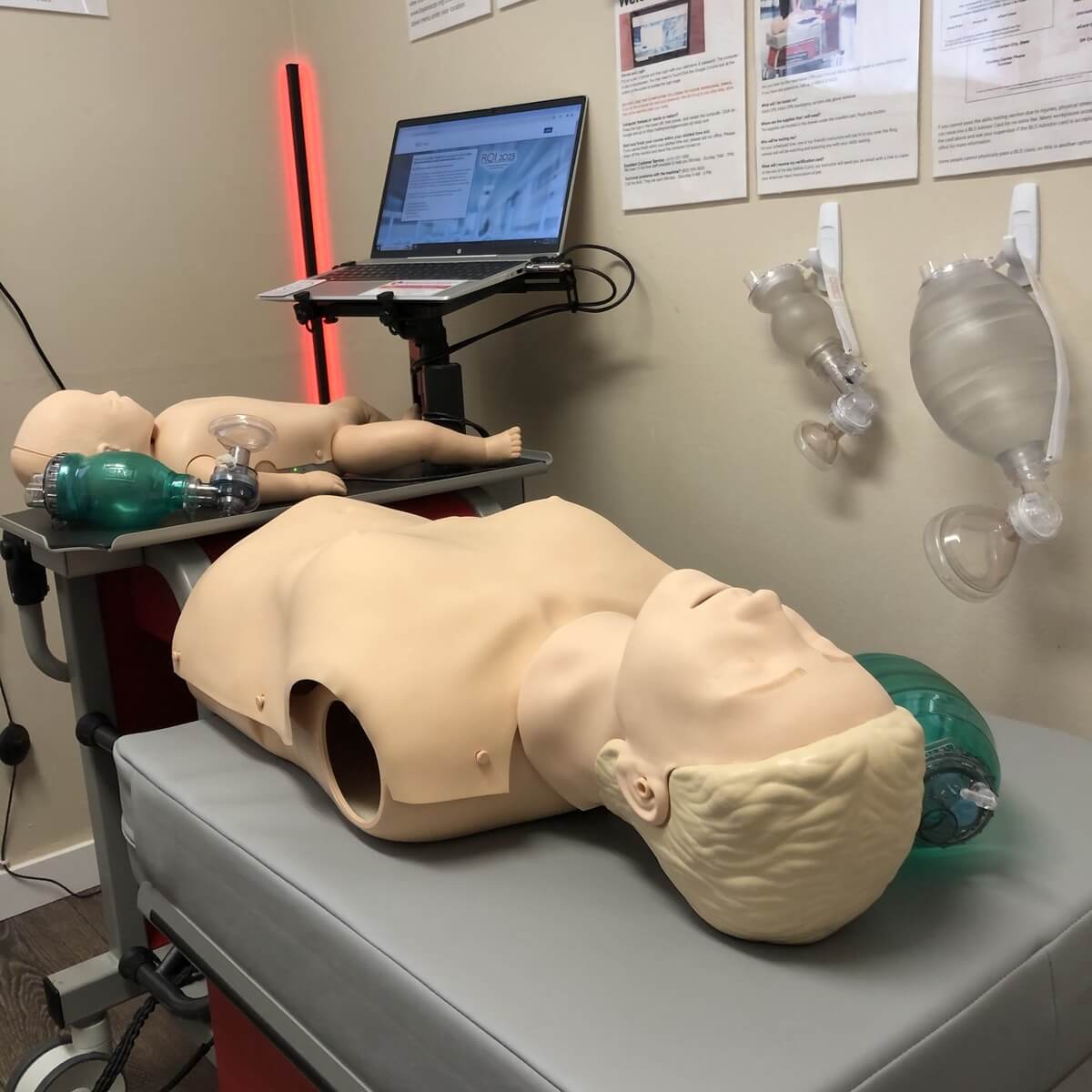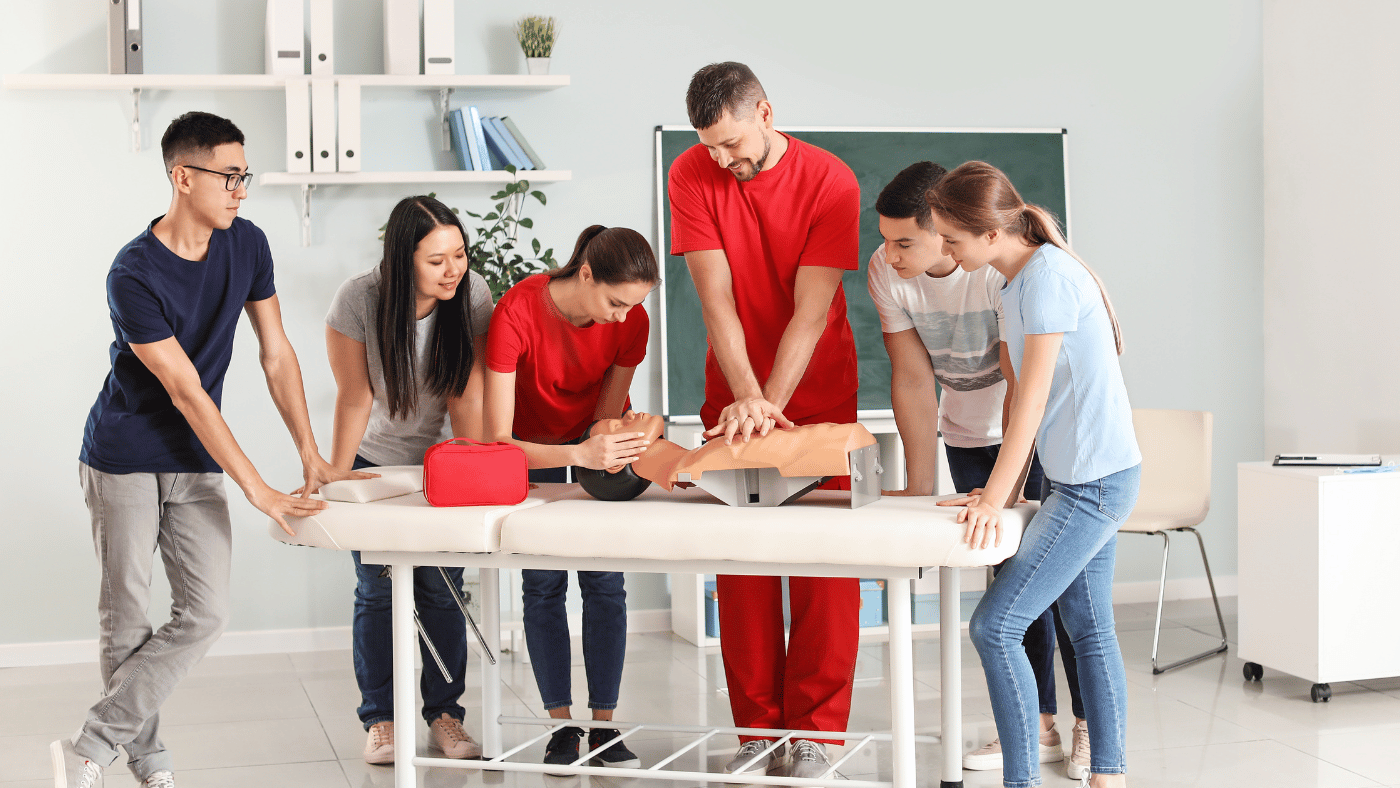Emergencies can happen anytime, anywhere. Would you know what to do if someone near you stopped breathing? CPR training gives you the skills and confidence to respond effectively in these critical situations. This guide is your go-to resource for CPR in San Francisco. We’ll explore various CPR course options, discuss the importance of hands-on training, and help you find the perfect class to fit your needs and schedule. Whether you’re a healthcare professional, a parent, or simply someone who wants to be prepared, this guide will help you find the right CPR training in San Francisco.
Key Takeaways
- CPR training empowers you to save lives: It’s a skill accessible to everyone, regardless of background, and can make a critical difference in emergencies. Find a provider like Safety Training Seminars to get certified.
- Choose the right course to meet your goals: Whether you’re a parent, healthcare professional, or simply want to be prepared, select a CPR course that aligns with your specific needs and learning style. Consider factors like course content, format, and instructor experience.
- CPR certification is easy and convenient: Many providers offer online registration, flexible schedules, and various locations. Explore local resources and find a class that fits your lifestyle.
What is CPR and Why Does it Matter?
Cardiopulmonary Resuscitation (CPR) is a life-saving technique used when someone’s breathing or heartbeat has stopped. This can happen during a heart attack, near drowning, or other medical emergencies. CPR involves chest compressions and rescue breaths that circulate oxygenated blood to the brain and other vital organs. Keeping this blood flow going can prevent brain damage and give someone a much better chance of survival until paramedics arrive. The American Heart Association provides detailed information on the importance of CPR and its impact on survival rates.
Learning CPR is empowering. It means you can confidently step in during a crisis and potentially make a real difference. Studies show that effective bystander CPR can double or even triple a person’s odds of surviving cardiac arrest. Think about it: your actions could save someone’s life. CPR training equips you with the skills and the confidence to act quickly and effectively in an emergency. It’s a vital skill for anyone, not just medical professionals.
Best CPR Training in San Francisco
Finding the right CPR training can feel overwhelming with so many options. To help you out, I’ve put together a quick overview of some popular choices in San Francisco.
Safety Training Seminars
Safety Training Seminars offers a wide range of CPR and first-aid certification courses right here in San Francisco. They cover everything from adult CPR to child and infant CPR, plus AED and first-aid training. This makes them a convenient one-stop shop for all your certification needs. They also offer American Heart Association courses, including BLS, ACLS, PALS, and RQI. Plus, they’re committed to keeping their prices competitive with a low-price guarantee, so you can get high-quality training without breaking the bank.
American Red Cross
The American Red Cross is a well-known provider of CPR and first-aid classes in San Francisco and throughout California. They offer a more intimate class setting, which can be a great option if you prefer smaller groups and more personalized attention.
Revive CPR
If you’re looking for American Heart Association (AHA) certified courses, Revive CPR is another option in San Francisco. They focus on in-person training with real instructors and manikins, giving you practical, hands-on experience. They offer AHA-certified CPR, BLS, and first-aid classes.
San Francisco Fire Department
While the San Francisco Fire Department doesn’t directly offer CPR or first-aid training, their website points you to other resources where you can learn these essential skills.
Neighborhood Emergency Response Team (NERT)
For those interested in broader emergency preparedness, the Neighborhood Emergency Response Team (NERT) provides a free disaster preparedness course. While it includes a section on disaster medicine, it’s important to note that this isn’t a certified CPR or first-aid course. It’s a great starting point for general knowledge, but you’ll need additional training for formal certification.
CPR Course Options
Finding the right CPR course depends on your individual needs and goals. Whether you’re a parent, a healthcare professional, or just want to be prepared, there’s a CPR class out there for you. Here’s a breakdown of common CPR course options:
Adult CPR
Adult CPR courses focus on techniques for responding to cardiac arrest and breathing emergencies in adults. You’ll learn chest compressions, rescue breaths, and how to use an AED. Some courses, like the American Heart Association’s Family & Friends CPR course, also cover CPR for children and infants. This comprehensive approach teaches adult Hands-Only CPR, adult CPR with breaths, child CPR with breaths, AED use, infant CPR, and how to handle airway obstructions.
Child and Infant CPR
Children and infants require specialized CPR approaches. Their smaller bodies and airways call for gentler compressions and modified breathing techniques. CPR Certification Tucson’s article on the differences between adult, child, and infant CPR explains that child CPR compressions should be about two inches deep, delivered with care. These courses prepare caregivers, teachers, and anyone working with children to respond effectively in pediatric emergencies.
Basic Life Support (BLS)
BLS certification is essential for healthcare providers and other professionals who respond to life-threatening situations. BLS courses build on basic CPR skills, adding techniques like two-rescuer CPR, bag-mask ventilation, and the use of advanced airways. Safety Training Seminars offers a range of American Heart Association-certified BLS courses in San Francisco.
First Aid/CPR Combo Courses
Combining first aid and CPR training gives you a well-rounded skill set for various emergencies. These courses cover essential first aid for injuries like cuts, burns, and fractures, along with CPR and AED training. The American Red Cross offers a blended learning Adult and Pediatric First Aid/CPR/AED course that prepares students to handle many emergencies in both adults and children.
Advanced Cardiac Life Support (ACLS)
ACLS training is designed for healthcare professionals who manage cardiopulmonary arrest and other cardiovascular emergencies. ACLS courses cover airway management, pharmacology, and ECG interpretation. Providers like Heart Start CPR offer ACLS certification in San Francisco.
CPR Class Costs & Accessibility
Finding the right CPR class means balancing cost, convenience, and quality. Let’s break down the price ranges you can expect in San Francisco and explore some ways to make training more affordable.
Typical Price Range
CPR certification costs in the Bay Area, much like the cost of living, can vary. You’ll find a range of prices depending on the type of CPR class you need (adult, child/infant, or a comprehensive course) and whether you choose an online, in-person, or hybrid format. In-person classes, offering smaller groups and direct instructor feedback, often come with a higher price tag. Online CPR courses are generally the most budget-friendly, but double-check that they meet any requirements your workplace or licensing board might have. It’s always a good idea to confirm precisely what the certification covers before you register.
Group Discounts & Promotions
If you’re training a team or group of friends, look for CPR providers offering group discounts. Some companies, like Revive CPR, offer discounts of up to 30% for group classes and may even bring the training to your location in the San Francisco Bay Area, saving you travel time and hassle. This can be a smart way to make high-quality, in-person training more accessible.
Safety Training Seminars’ Low Price Guarantee
At Safety Training Seminars, we’re committed to providing high-quality CPR and first aid training at competitive prices. We understand that cost can be a barrier, so we offer a low-price guarantee across all our courses, including CPR, BLS, ACLS, PALS, and First Aid. We believe everyone should have access to these life-saving skills.
Free & Low-Cost Options
While a certified CPR course from a reputable provider like the American Red Cross or American Heart Association is usually the best route, some free and low-cost options can provide basic training. The San Francisco Fire Department sometimes partners with community organizations to offer free or reduced-cost CPR training, so it’s worth checking their website or contacting them directly. Additionally, organizations like the Neighborhood Emergency Response Team (NERT) offer a free disaster preparedness course that includes a section on disaster medicine. While not a substitute for a full CPR/First Aid certification, NERT training can be a valuable resource for learning basic life-saving techniques.
Choose the Right CPR Course
Finding the right CPR course is crucial for effective learning and preparedness. With various options available, consider these factors to make an informed decision.
Factors to Consider
When selecting a CPR course in San Francisco, think about your specific needs. Why are you getting certified? Are you a healthcare provider, a childcare worker, or simply someone who wants to be prepared for emergencies? Understanding your motivation will help you choose the right course. Also, consider the course content. Some courses cover basic CPR and first aid, while others, like ACLS (Advanced Cardiac Life Support) or PALS (Pediatric Advanced Life Support), are designed for healthcare professionals. Your learning style matters too. Do you prefer hands-on instruction or online learning? Finally, check the instructor’s qualifications. Look for certified instructors with experience and positive reviews. Safety Training Seminars prioritizes high-quality instruction and offers a low-price guarantee.
Match Course to Your Needs
Think about the skills you want to acquire and choose a course that aligns with your goals. If you need CPR certification for your job, ensure the course meets your employer’s requirements. For healthcare professionals, courses like BLS (Basic Life Support) and RQI are essential. Parents, teachers, or babysitters might find a basic CPR and first aid course sufficient. Consider specialized courses like CPR for infants and children if you work with young kids. Matching the course content to your specific needs ensures you gain the most relevant skills. You can find various CPR and first aid courses tailored to different needs at Safety Training Seminars.
Online vs. In-Person Training
CPR training programs come in different formats. Online courses offer flexibility, allowing you to learn at your own pace. However, in-person training provides crucial hands-on practice and personalized feedback from instructors. Blended learning combines online modules with in-person skills sessions, offering a balance of convenience and practical experience. If you’re unsure which format suits you best, consider your learning preferences and the level of interaction you need. Hands-on practice is essential for building confidence and mastering CPR techniques, so prioritize in-person or blended learning if possible. Safety Training Seminars offers various CPR courses in San Francisco, including in-person and blended learning options, to cater to different learning styles. Check out their course schedule to find a format that works for you.
Get CPR Certified
Getting CPR certified is straightforward, and several options in San Francisco fit your schedule and learning style. Here’s what you can expect:
Course Format & Duration
CPR classes in San Francisco typically combine classroom instruction, demonstrations, and hands-on practice. You’ll learn essential techniques in a supportive environment, with opportunities to ask questions and get personalized feedback. Safety Training Seminars offers courses daily, including weekends, to accommodate busy schedules. Similar to providers like Revive CPR, they keep class sizes small for more individual attention. Expect a CPR course to last several hours, depending on the specific course type and any additional certifications included, such as First Aid.
Certification Renewal
CPR certifications are typically valid for two years. It’s important to stay current with your certification to ensure you’re prepared to respond effectively in an emergency. Renewal courses are readily available and often shorter than the initial certification course. Safety Training Seminars offers convenient renewal courses seven days a week throughout San Francisco and nearby areas like Daly City, San Mateo, and Oakland. The American Red Cross also provides renewal options in San Francisco.
Hands-On Skills Practice
The most crucial part of any CPR class is the hands-on practice. You’ll learn how to perform chest compressions, rescue breaths, and use an AED (automated external defibrillator). These skills are practiced on mannequins designed to simulate real-life scenarios. You’ll gain experience performing CPR on adult, child, and infant mannequins, preparing you to respond confidently in various emergencies. This practical training is essential for building muscle memory and confidence, ensuring you can effectively apply these life-saving techniques under pressure.
CPR Instructor Qualifications
Choosing the right CPR class is important, and so is selecting a qualified instructor. A great instructor can make all the difference in your learning experience and confidence level. Here’s what to look for in a CPR instructor’s qualifications:
Certification Requirements
First and foremost, your CPR instructor should hold a current certification from a recognized organization like the American Heart Association (AHA) or the American Red Cross. While you don’t technically need formal training to perform CPR in an emergency, certified instructors have demonstrated their knowledge and skills through rigorous training programs. This ensures they’re up-to-date on the latest CPR guidelines and best practices. At Safety Training Seminars, our instructors maintain current certifications and are committed to providing high-quality instruction.
Ongoing Training
CPR techniques and guidelines can evolve, so it’s essential for instructors to pursue ongoing training and professional development. Look for instructors who actively participate in continuing education courses and stay abreast of advancements in CPR. This dedication to continuous improvement ensures they provide students with the most current and effective training. For example, RQI classes offer healthcare professionals regularly updated training. This commitment to ongoing training is reflected in the quality of instruction at Safety Training Seminars. We believe in empowering our students with the latest life-saving techniques.
Experience & Expertise
Beyond certifications, consider the instructor’s practical experience. An instructor with a background in healthcare, emergency services, or related fields can offer valuable real-world insights. Ask about their teaching experience and look for instructors who demonstrate a passion for CPR education and a commitment to student success. Our instructors at Safety Training Seminars bring a wealth of experience to the classroom, creating a supportive and engaging learning environment. We prioritize hands-on training and personalized feedback, ensuring our students develop the confidence and skills to respond effectively in emergencies. We also offer a low price guarantee, so you can find high-quality training that fits your budget.
CPR Training Myths Debunked
Let’s clear up some common misconceptions about CPR training. These myths can prevent people from learning this life-saving skill, so let’s set the record straight.
“Only Medical Professionals Can Do CPR”
It’s a common misconception that only doctors and nurses can perform CPR. The truth is, anyone can learn CPR! High-quality CPR training programs, like those offered at Safety Training Seminars, empower everyday people to confidently respond to emergencies. Knowing CPR means you can provide immediate assistance, potentially bridging the gap until professional help arrives.
“CPR Always Saves Lives”
Movies and TV shows often portray CPR as a dramatic, life-restoring miracle. While CPR is undeniably crucial and can significantly increase the chances of survival, it’s important to have realistic expectations. CPR doesn’t always restart a stopped heart. Understanding this fact doesn’t diminish the importance of learning CPR; rather, it emphasizes the critical role it plays in increasing the odds of a positive outcome. It’s always best to act quickly and perform CPR—it can make all the difference.
“CPR is Hard to Learn”
Many people avoid CPR training because they assume it’s complicated. This is simply not true. Modern CPR training is designed to be straightforward and accessible. Clear instructions and hands-on practice build your confidence and equip you with the skills to respond effectively in a crisis. You don’t need a medical background to become CPR certified. Check out our CPR courses to learn more.
“CPR is Only for Heart Attacks”
While CPR is often associated with heart attacks, its applications are much broader. CPR can be essential in various emergencies, including near-drowning incidents, choking, or any situation where someone’s breathing or heartbeat has stopped. Learning CPR equips you to handle a wider range of emergencies, making it a valuable skill set for anyone.
Benefits of CPR Training in San Francisco
CPR training offers numerous benefits, both personal and professional. Whether you live in San Francisco, Daly City, San Mateo, or Oakland, CA, understanding these advantages can motivate you to seek out a CPR course and become equipped to handle emergencies.
Be Prepared
CPR training empowers you to respond effectively in critical situations. Equipping yourself with these skills allows you to provide immediate assistance to someone experiencing cardiac arrest. Learning CPR instills confidence and prepares you to act quickly and decisively when every second counts. The Family & Friends CPR course offered by the American Heart Association covers essential lifesaving techniques, including adult Hands-Only CPR, child CPR with breaths, and infant CPR. Knowing how to perform CPR can make a profound difference.
Advance Your Career
Many professions require or benefit from CPR certification. For healthcare professionals, CPR certification is often a prerequisite for employment and licensure. Even in fields outside of healthcare, having CPR training can enhance your resume and create new opportunities. It demonstrates your commitment to safety and your ability to handle pressure. If you’re looking to advance your career or simply gain a valuable skill, CPR training is a worthwhile investment. Safety Training Seminars offers a variety of courses to meet the requirements of various professions.
Improve Community Safety
By becoming CPR certified, you contribute to a safer community. When more people are trained in CPR, the chances of someone receiving immediate assistance during a medical emergency increase significantly. Studies have shown that effective bystander CPR can double or triple survival rates in cardiac arrest cases. By getting trained, you become a valuable link in the chain of survival, potentially saving lives in your community. CPR training creates a ripple effect, empowering individuals to make a positive impact. You can find CPR classes and certification through organizations like the American Red Cross.
Find & Register for CPR Classes
Ready to get CPR certified? Finding the right class and registering is easier than you think. Here’s how to find CPR training in San Francisco:
Online Resources & Booking
Many organizations offer online registration for CPR classes. Safety Training Seminars makes it easy to find a class that fits your schedule and register online. You can also find CPR classes through the American Red Cross and Heart Start CPR, which often include valuable First Aid training as part of their CPR certification courses. Browse their websites to view upcoming class dates, times, and locations. Online registration streamlines the process, allowing you to quickly secure your spot.
Local Centers & Hospitals
Hospitals and community centers frequently host CPR training sessions. Check with hospitals in your area, such as UCSF or California Pacific Medical Center, to see if they offer CPR classes to the public. Local community centers and recreation departments are also great resources. The Red Cross also offers classes throughout San Francisco and across the state.
Workplace Training
Some employers provide on-site CPR training for their employees. This is especially common in healthcare settings. Inquire with your HR department or manager to see if this is an option at your workplace. Safety Training Seminars can work with businesses to provide on-site training, offering a variety of American Heart Association-certified courses, from basic CPR to more advanced life support training like BLS, ACLS, and PALS. Even if formal CPR training isn’t required for your job, getting certified demonstrates your preparedness and builds confidence in your abilities. You can learn more about CPR certification in San Francisco on the Safety Training Seminars blog.
If you’re located in the East Bay, BLS CPR Classes in Concord offer a convenient solution for getting certified. Meanwhile, those closer to Silicon Valley can take advantage of BLS CPR Classes in Palo Alto to meet their training needs.
Frequently Asked Questions
What’s the difference between CPR and First Aid? CPR focuses specifically on life-threatening situations where someone’s breathing or heartbeat has stopped. It involves chest compressions and rescue breaths. First Aid, on the other hand, covers a broader range of injuries and illnesses, from minor cuts and burns to more serious situations like broken bones or allergic reactions. While distinct, they often complement each other, providing a comprehensive approach to emergency care. Many courses combine CPR and First Aid training, giving you a well-rounded skill set to handle various emergencies.
How do I choose the right CPR class for me? Consider your specific needs and goals. Are you required to have CPR certification for your job? Do you work with children or adults? Do you prefer in-person instruction or the flexibility of online learning? Think about your learning style and what you hope to achieve. If you’re unsure, reach out to a training provider like Safety Training Seminars. They can help you find the best fit.
How much does CPR certification cost in San Francisco? The cost of CPR certification varies depending on the provider, the type of course, and whether you choose online or in-person training. Generally, online courses are more budget-friendly, while in-person classes offer more hands-on practice and personalized instruction. Look for providers like Safety Training Seminars that offer a low-price guarantee to ensure you’re getting quality training at a competitive price. Also, check for group discounts if you’re training with friends or colleagues.
How long is a CPR certification valid, and how do I renew it? Most CPR certifications are valid for two years. It’s important to renew your certification before it expires to maintain your skills and ensure you’re prepared for emergencies. Renewal courses are typically shorter than the initial certification course and are offered by various providers, including Safety Training Seminars and the American Red Cross.
What if I’m nervous about performing CPR in a real emergency? It’s completely normal to feel apprehensive about using CPR in a real-life situation. That’s why hands-on practice during training is so important. It helps build muscle memory and confidence. A good CPR course will provide ample opportunities to practice on mannequins in a supportive environment. Remember, any attempt at CPR is better than none. Your actions, even if imperfect, can significantly improve someone’s chances of survival.


